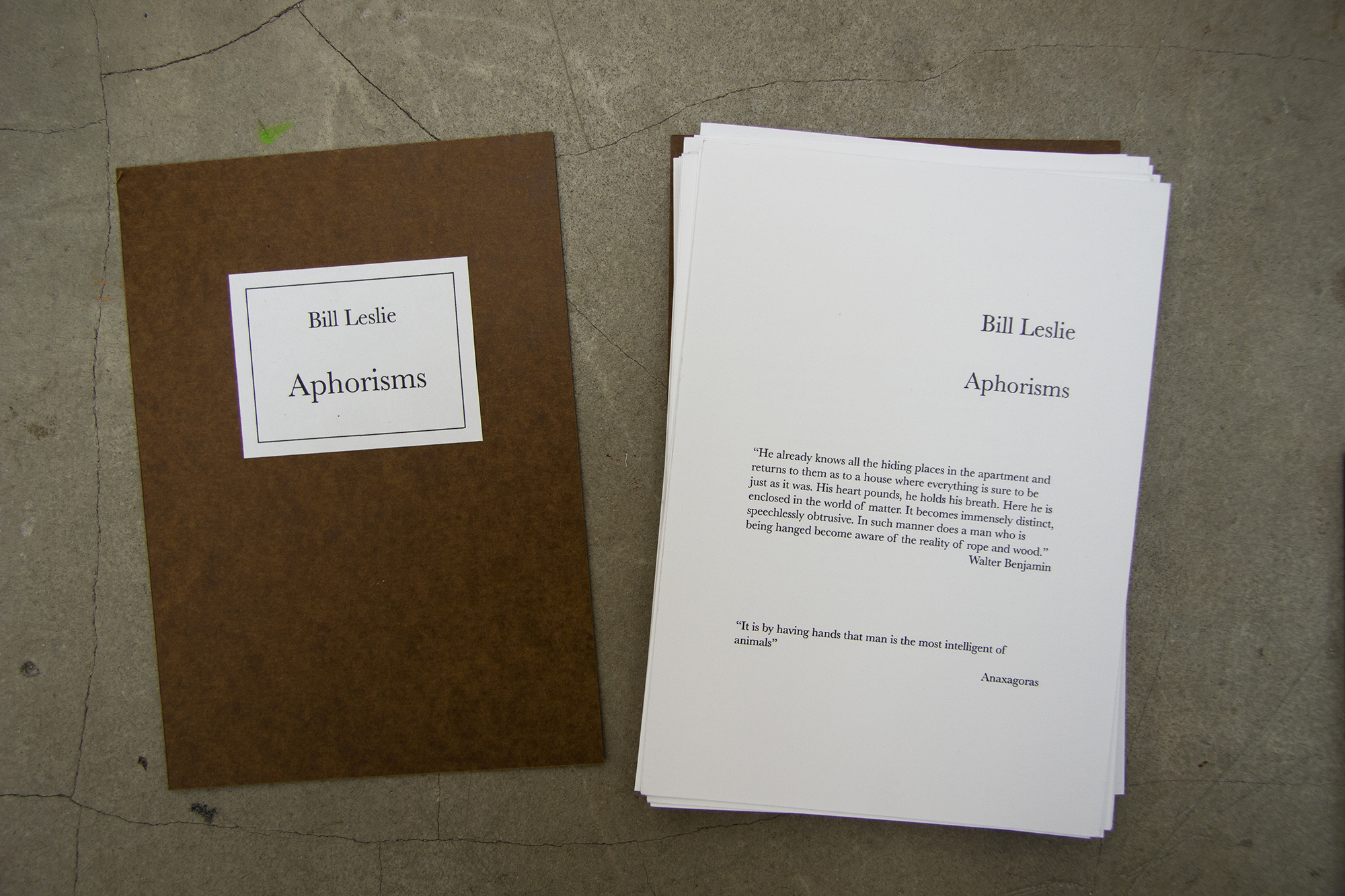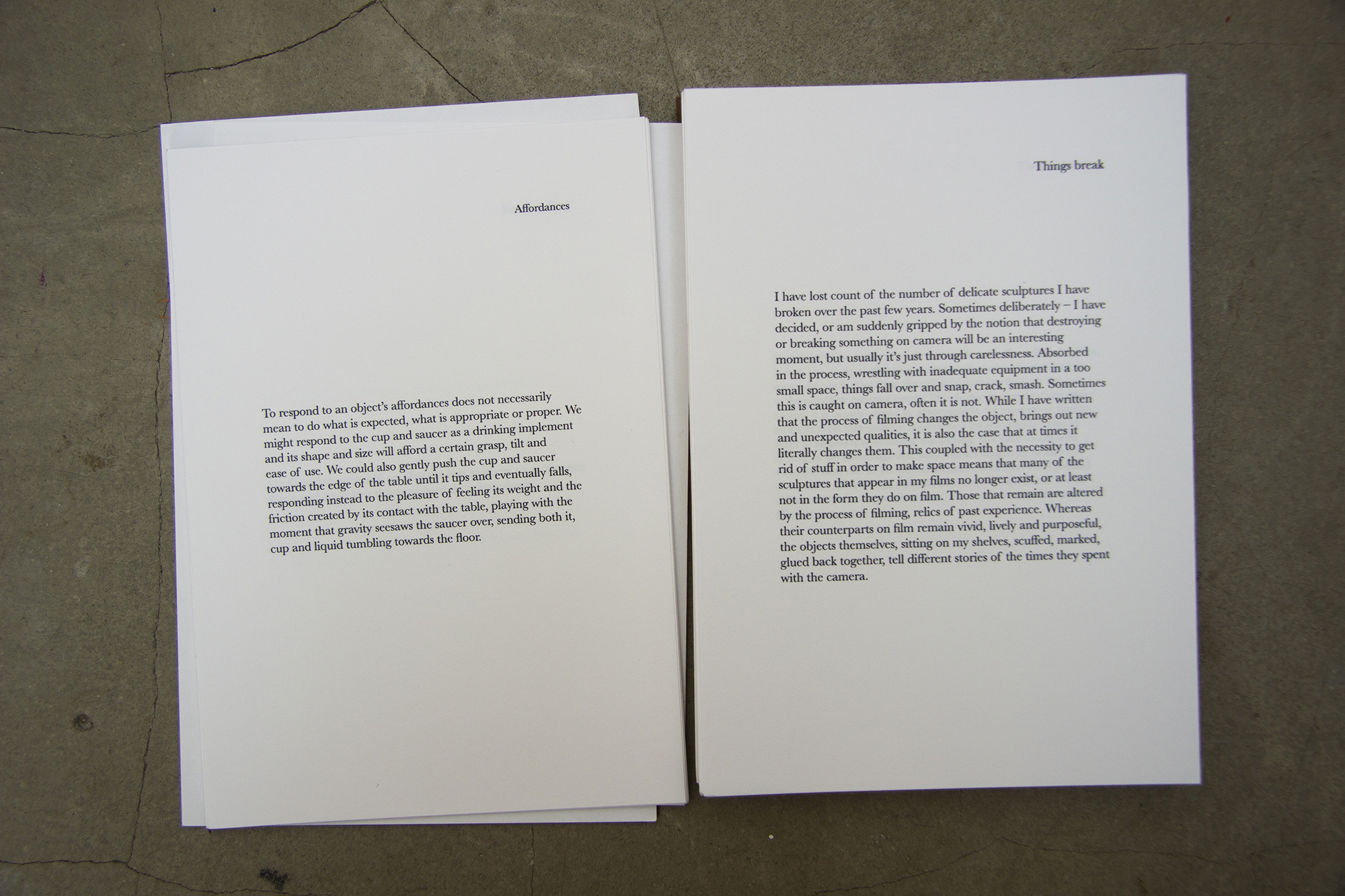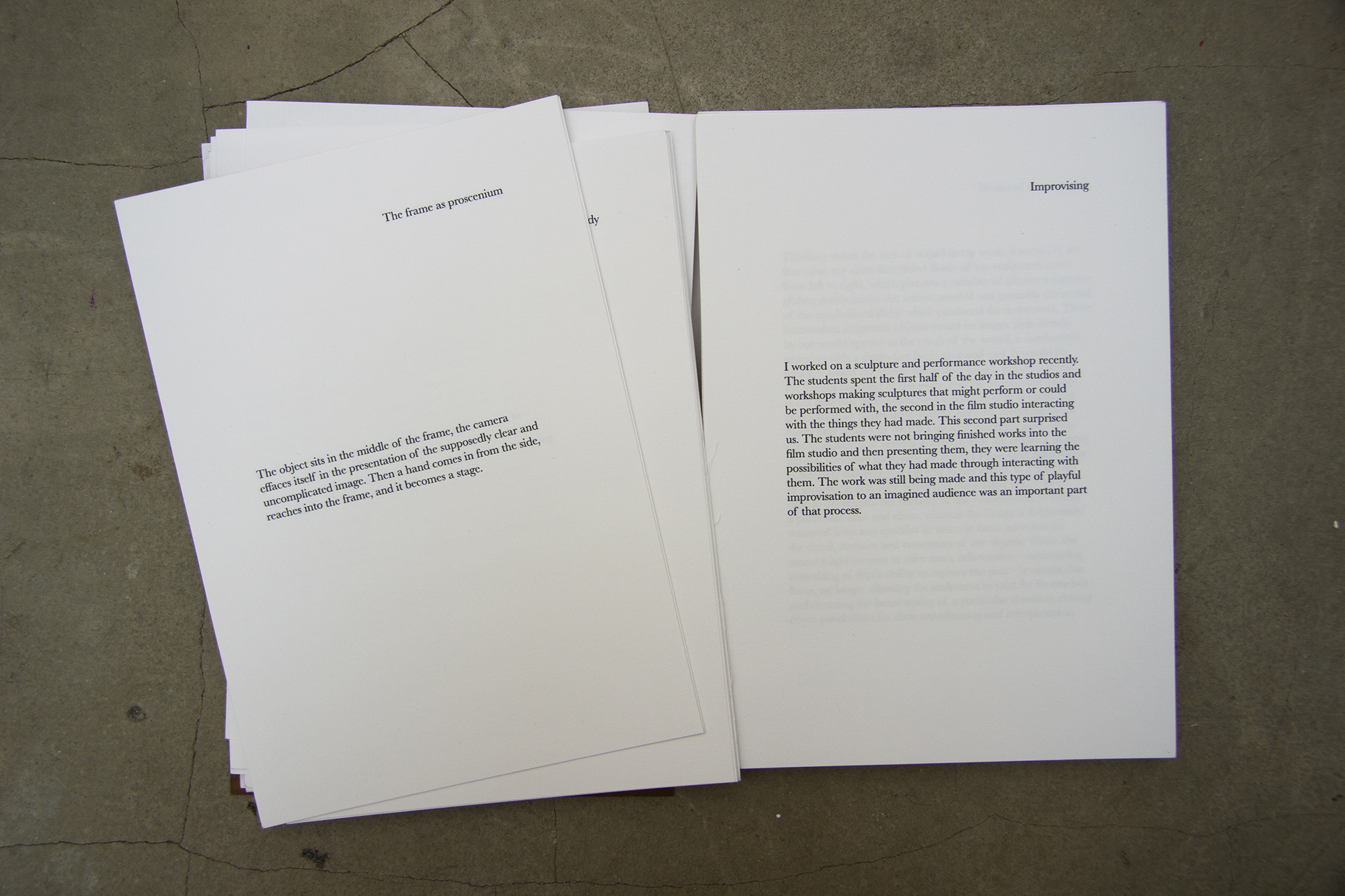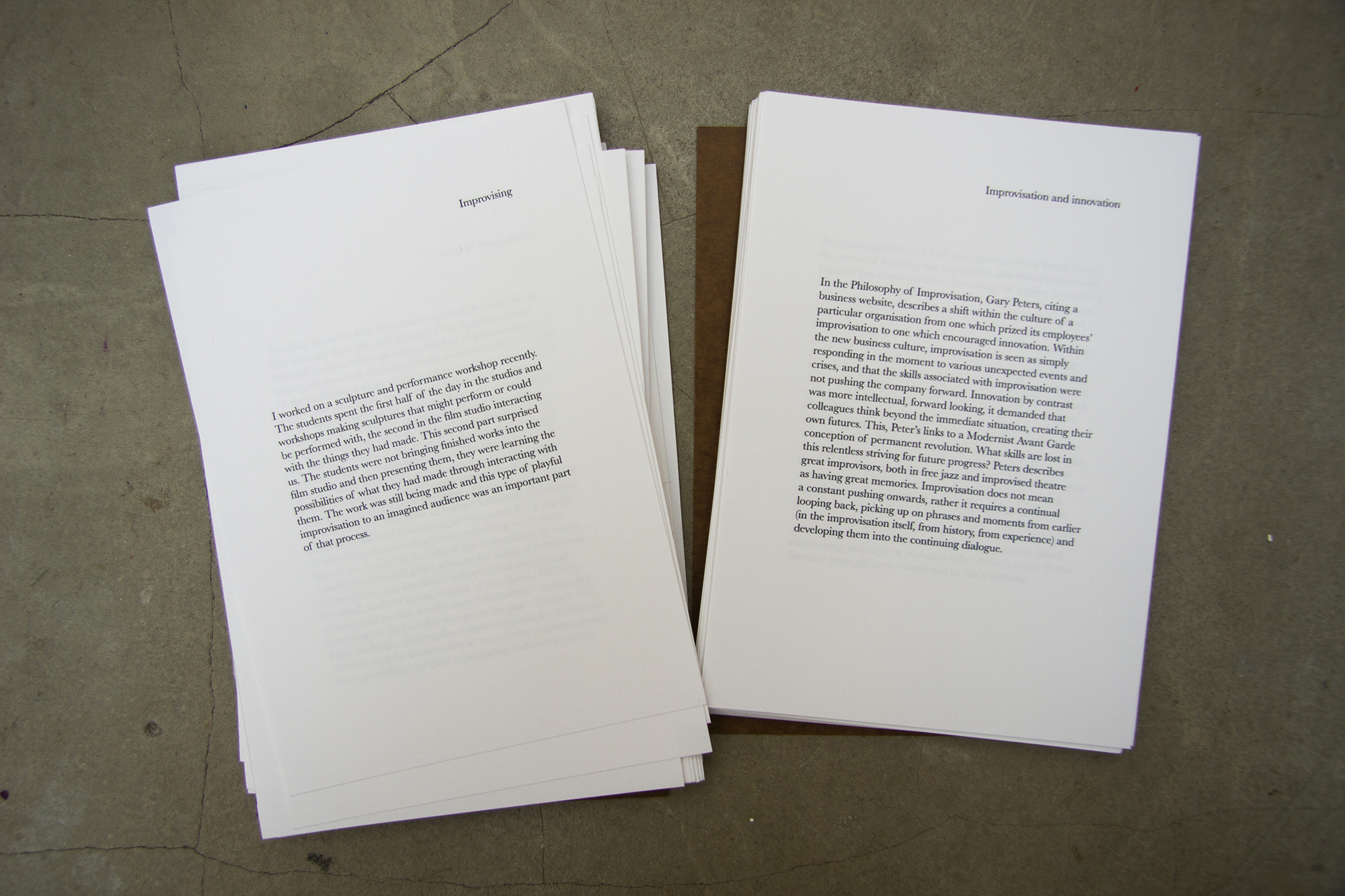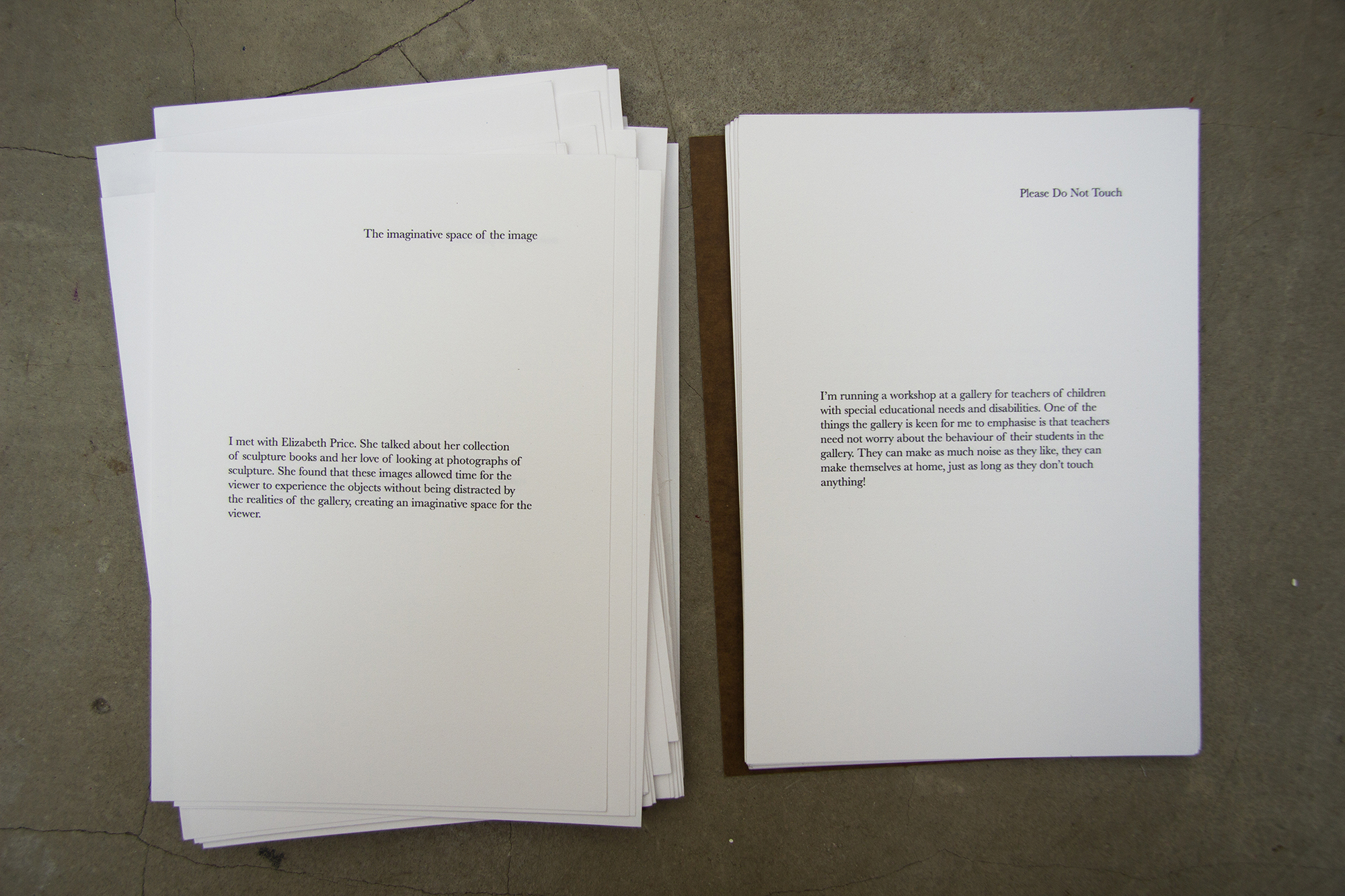
Aphorisms
The writing of a series of short insights or aphorisms began at around eighteen months after the start of the research. Behind this activity was a desire to contextualise the research, in particular the art practice happening in the studio, connecting it with a range of experiences happening alongside it. This was intended not to describe or pin down the art work, but to expand and extend its possibilities. It includes theoretical writing, anecdote, key experiences or moments of realisation relating to the research practice, discussions with friends and colleagues and the rethinking of past experiences through the lens of the present. As an accompaniment to the various practical outputs of the research, it is not a conventional academic piece of writing, and as such, the decision was made not to include referencing (although specific authors are mentioned from time to time), as this would distract from the flow and continuity of the writing and which would give the texts an unwanted sense of authority. Instead a bibliography has been included on the back cover. ...
Walter Benjamin’s One Way Street (1997) and The Storyteller (1997) became important points of reference as they seemed to offer a mode of writing which was both analytical and experiential. Through Benjamin’s discussion of the storyteller, it was possible to conceive of the writing as a communication of experience, rather than the explication of readily verifiable information, or as a series of events with a singular narrative construction. The aim was to create writing which would not attempt to justify or explain the artwork, but which could be read around or alongside the film material, orbiting elliptically and offering the viewer a series of openings for further thought and consideration, evidencing the rich and complex process through which the work was developing.
An initial selection of these pieces of writing was read aloud at a screening of film material at the ICA cinema in 2017. The reader (me) sitting in the audience in an attempt not to present the texts as an authoritative ‘voice from the front’. Subsequently in 2018/19 they were printed, each on a single sheet, and arranged on a long table alongside films on small screens and a selection of sculptures. Viewers could sift through the sheets and read as they wished.
The text has developed throughout the following years; passages added and others developed. They form a distinct part of the practical output of the research, as opposed to a commentary upon it. They are included within the submission as a series of individual pages which can be read through in any order. In the digital version they exist in series, but readers are encouraged to approach the reading of this text as they feel is appropriate to their own engagement with the material as a whole. Needless to say, it is not really intended to be read start to finish in one sitting.
The writing of a series of short insights or aphorisms began at around eighteen months after the start of the research. Behind this activity was a desire to contextualise the research, in particular the art practice happening in the studio, connecting it with a range of experiences happening alongside it. This was intended not to describe or pin down the art work, but to expand and extend its possibilities. It includes theoretical writing, anecdote, key experiences or moments of realisation relating to the research practice, discussions with friends and colleagues and the rethinking of past experiences through the lens of the present. As an accompaniment to the various practical outputs of the research, it is not a conventional academic piece of writing, and as such, the decision was made not to include referencing (although specific authors are mentioned from time to time), as this would distract from the flow and continuity of the writing and which would give the texts an unwanted sense of authority. Instead a bibliography has been included on the back cover. ...
Walter Benjamin’s One Way Street (1997) and The Storyteller (1997) became important points of reference as they seemed to offer a mode of writing which was both analytical and experiential. Through Benjamin’s discussion of the storyteller, it was possible to conceive of the writing as a communication of experience, rather than the explication of readily verifiable information, or as a series of events with a singular narrative construction. The aim was to create writing which would not attempt to justify or explain the artwork, but which could be read around or alongside the film material, orbiting elliptically and offering the viewer a series of openings for further thought and consideration, evidencing the rich and complex process through which the work was developing.
An initial selection of these pieces of writing was read aloud at a screening of film material at the ICA cinema in 2017. The reader (me) sitting in the audience in an attempt not to present the texts as an authoritative ‘voice from the front’. Subsequently in 2018/19 they were printed, each on a single sheet, and arranged on a long table alongside films on small screens and a selection of sculptures. Viewers could sift through the sheets and read as they wished.
The text has developed throughout the following years; passages added and others developed. They form a distinct part of the practical output of the research, as opposed to a commentary upon it. They are included within the submission as a series of individual pages which can be read through in any order. In the digital version they exist in series, but readers are encouraged to approach the reading of this text as they feel is appropriate to their own engagement with the material as a whole. Needless to say, it is not really intended to be read start to finish in one sitting.
